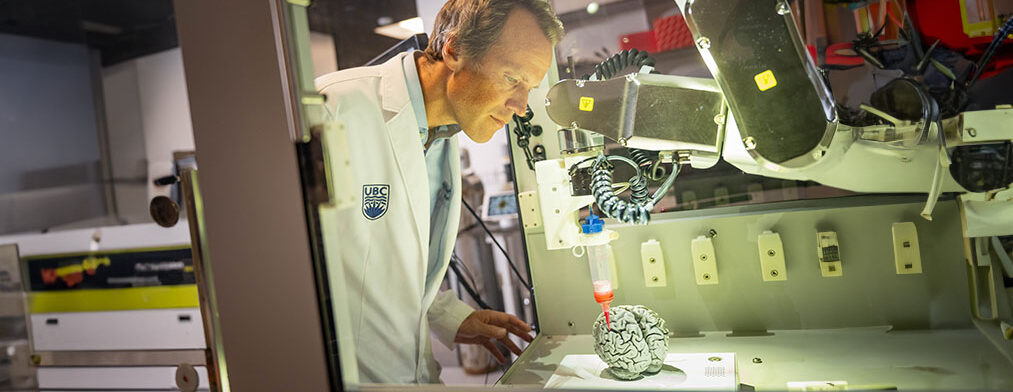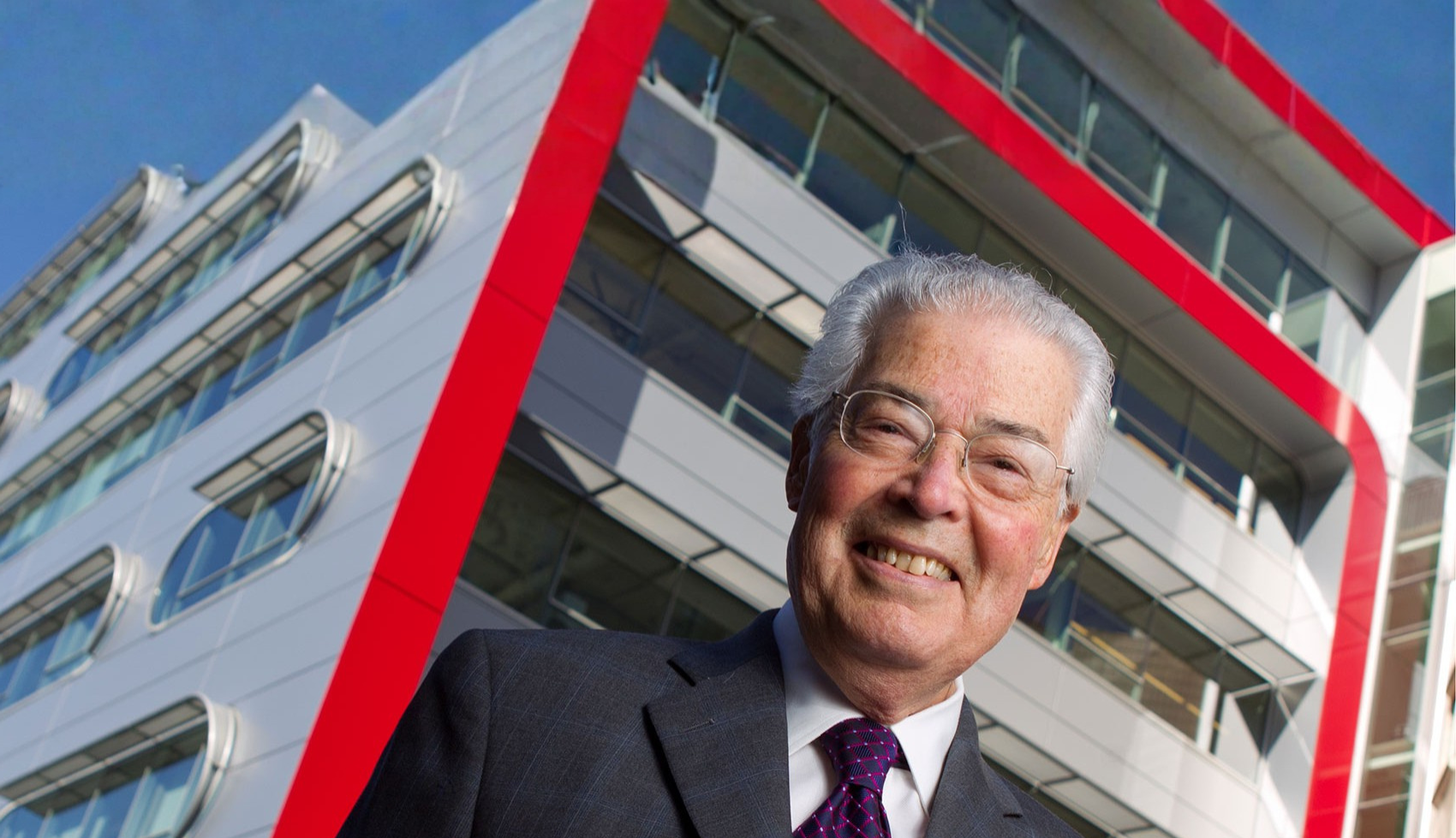Why do some people exhibit the same brain pathology as patients with Alzheimer’s disease, but experience no symptoms? With donor support, Dr. Haakon Nygaard and his team at the Clinic for Alzheimer’s Disease and Related Disorders (CARD) at UBC Hospital are on a mission to answer this question and revolutionize treatment for the devastating disease. The following article appeared in Pathways – the UBC Faculty of Medicine’s digital magazine.
If you were to shrink down to the size of a single cell and peer inside the brain of a person with Alzheimer’s disease, you would find a labyrinth of protein clumps and sticky, thread-like structures.
Known as amyloid plaques and neurofibrillary (or tau) tangles, these abnormal accumulations of protein fragments in the brain are the hallmarks of Alzheimer’s disease. Over time, they interfere with the brain’s ability to function by hampering communication between neurons, ultimately triggering the telltale signs of the disease, like memory loss.
Mysteriously, the brains of some seemingly healthy older individuals — those with no signs of dementia — can also be riddled with plaques and tangles. These individuals, for all intents and purposes, are ‘resilient’ to Alzheimer’s.
Today, UBC scientists are on a bold mission to understand this resilience at a deeper level, with the hope that what they uncover could hold the key to revolutionizing treatment for the devastating disease.
“If we can get to the bottom of why a person with no symptoms of cognitive decline has the same brain pathology as someone with Alzheimer’s, then we could look to mimic or harness that resiliency and find new therapeutics,” says UBC’s Dr. Haakon Nygaard, the Fipke Professor in Alzheimer’s Research and director of the UBC Hospital Clinic for Alzheimer Disease and Related Disorders.
To help unravel the mystery behind Alzheimer’s resilience, Dr. Nygaard is collaborating with UBC scientists who are embracing some of the world’s latest advances in stem cell technology, 3D bioprinting, next-generation neuroimaging and single-cell transcriptomics.
Their journey starts with growing ‘mini-brains’ in a petri dish.
From blood cells to 3D ‘mini-brains’
View this post on Instagram
Inside the Djavad Mowafaghian Centre for Brain Health at UBC, Dr. Nygaard carefully adjusts one of the settings on a 3D bio-printer — one of only a few printers of its kind in the world being used to advance Alzheimer’s research.
A low hum fills the room as a robotic arm moves into place and begins printing layers of brain cells into a petri dish.
“Brain cells respond very differently in a 3D versus 2D environment,” says Dr. Nygaard. “With 3D bioprinting, and our other advanced 3D models, we’re essentially trying to replicate how brain cells actually function and interact with one another in the human body.”
Similar to 3D printing, whereby a digital design is built layer upon layer, with a 3D bioprinter, a replica of living human tissues is printed in thin layers using biomaterial.
In the case of Dr. Nygaard’s lab, stems cells, derived from the blood of Alzheimer’s patients, are first reprogrammed into brain cells. Then, using the bioprinter or other tissue engineering methods, three-dimensional tissue models resembling areas of the patient’s brain are generated, including microscopic, ball-like structures known as “neurospheres.”
“These 3D human brain cell models are allowing us to gain greater insights into the basic cellular mechanisms that cause the brain to degenerate in Alzheimer’s,” says Dr. Nygaard.
Click here to read the full article.
VGH & UBC Hospital Foundation partners with donors to raise essential funds for specialized adult health care services and research benefiting everyone in BC, supporting Alzheimer’s research and numerous specialized programs across Vancouver Coastal Health. To donate, visit vghfoundation.ca/ways-to-give.
Share this:



